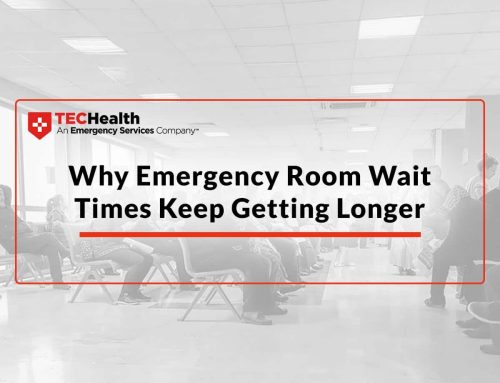
By Joel Betz, M.D., Regional Medical Director, TECHealth
Emergency medicine is fast-paced, intense, stressful, but above all, rewarding. The ER culture can be highly collaborative, and highly challenging, which can significantly impact the patient’s overall perception of his or her care experience.
When I was an Intern on the trauma service, one of our attending physicians seemed to be able to sniff out a medical fumble with the efficiency of a bloodhound. The moment something was not done to his specifications he would launch into a tirade of questions, accusations, and attacks, often being aggressive and confrontational. He was widely despised, and most other physicians loathed to work with him. It was not that he wasn’t intelligent, because of course he was. It wasn’t because he couldn’t teach, because he was quite gifted at it. But, because of the negativity that surrounded him, he was avoided whenever possible by the team. He eventually earned the nickname “The Sledgehammer.” This created an ambiance of trepidation and a culture of turmoil on the trauma service when he was on duty. These repercussions trickled down to the whole team, residents, interns, nurses, and staff included.
Contrast this physician with one of the emergency room attending physicians that I trained with as a resident. This physician was widely loved and admired. He had a reputation of being an outstanding teacher and an amazing physician. He also had a long history of nurturing and facilitating growth in his residents. I recall the first conversation I had with him when I “dropped the ball” on a patient in the emergency department. He pulled me aside and began by telling me that he was glad I was in the residency program, that he felt that I was a good fit and that he felt that my learning and progress were on track. Then he said something that shook me, “What happened today is not up to our standards here. I need you to do better than that next time you see a patient with that.” I broke out in a cold sweat, anxiety swept over me briefly, but deep down I knew he was right. In fact, I respected him for discussing it with me in such a straightforward and direct manner. How he ended the conversation has stuck with me since, “I can see you’ve got in you what it takes to do this! I know you’ve got this!” I left knowing I had to raise my effort and that I had a leader who would stand by me, encourage me, and assist me as I strived for new heights. Something in the positivity of his feedback made me want to improve, to prove him and to me I could do it.
Which of the two leadership styles do you think motivated those around them to improve and grow? Which one would you rather work with? Which one created an environment that resulted in the best care for patients?
To quote Kim Cameron from his book Positive Leadership, “if you implement positive leadership, performance and customer satisfaction go up. The duty of a leader is to create an organization where it is easy to practice kindness.”
Studies show the ratio of positive to negative comments was “the single most important factor in predicting organizational performance.” The optimal ratio is 5 positive comments for every 1 negative one. Interestingly, people who have a positivity ratio of at least 3:1 live longer, make more money, stay married longer, make better decisions, and perform their jobs better. People make mistakes and corrections must be made. Cameron describes delivering negative feedback using the following three steps:
- Describe the situation rather than evaluate it.
- Identify objective consequences or personal feelings associated with it rather than placing blame.
- Suggest acceptable alternatives rather than argue about who is right.
At TECHealth, using the 5:1 approach underpins our culture. If employees are doing well, we celebrate them personally and amongst their colleagues. When someone is not performing up to expectations, we make corrections immediately with honesty and respect. We deliver the feedback in a way that helps those receiving it lower their defenses and understand the correction is being done in their best interest, as well as the best interest of the company and our patients.
5:1 is a philosophy, a way of seeing each other and our world. It encapsulates TECHealth’s vision of creating a high-performing organization through positive communication where the ratio of positive to negative statements is at least 5 to 1. At TECHealth, we practice 5:1 by making an intentional effort to replace negative and critical language with affirmative and supportive language.
About the author: Joel Betz, M.D. graduated from Arizona State University in 2002 and then attended the University of Arizona School of Medicine, graduating in 2006. Following medical school, he completed an Emergency Medicine residency at Maricopa Medical Center in Phoenix, Arizona. Dr. Betz is board certified in Emergency Medicine. After residency, Dr. Betz started his ER career at Chandler Regional and Mercy Gilbert Medical Centers. Dr. Betz currently serves as Regional Medical Officer for TEC at Arizona General Hospital. He oversees all twelve HSED locations. His current interests and focus include increasing physician and staff communication, with a special focus on culture improvement.




